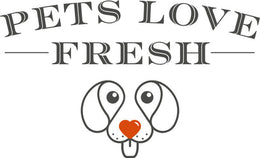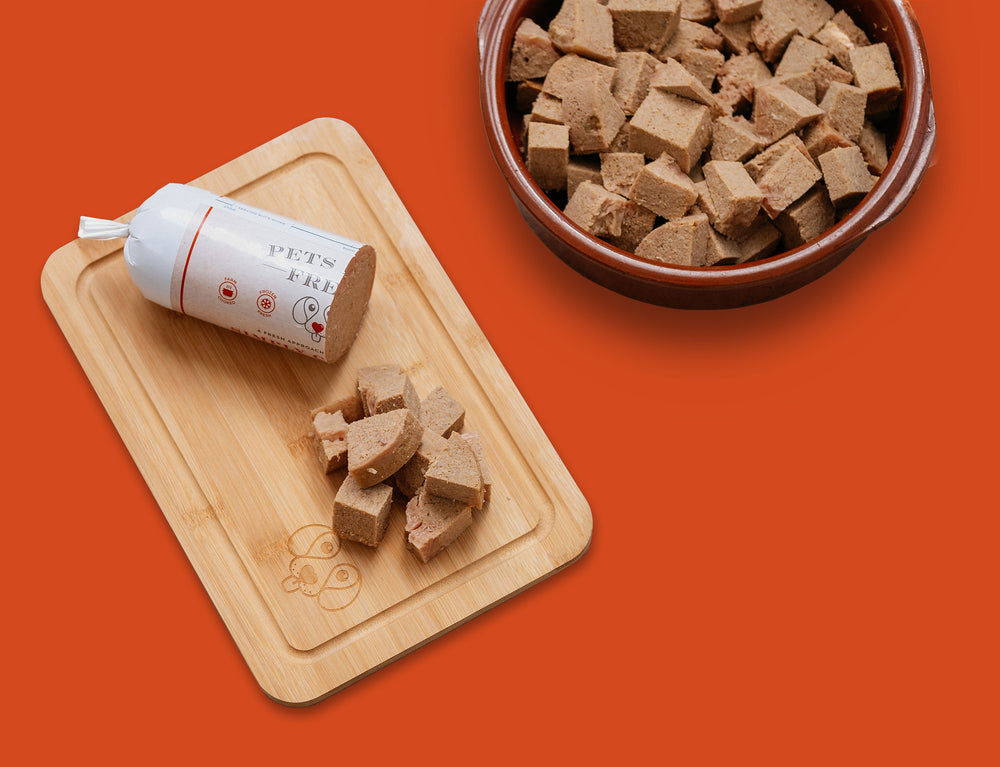We’re used to making sure our pups are getting enough of their proteins and vitamins, but many people are unsure if their dogs need fibre as part of a balanced diet. You might be wondering how you can fit fibre into your dog's diet, or question whether it is actually needed at all.
Fibre is often overlooked, but it’s a necessary staple in a healthy dog's diet. There are different types our pets need, and some dogs need more, while others need less. Understanding what fibre is, and how it helps your dog's digestion will help you make an informed decision when it comes to choosing their food.
Continue reading, and we’ll go into more detail about what it does, which foods contain high amounts of it, and how to increase fibre in your dog's diet.
What is Fibre for Dogs?
First things first, we need to understand what fibre is, and where it comes from. Fibre is a carbohydrate found in plants. It cannot be digested; instead, it travels to the lower intestine where it can help to keep the digestive system healthy. There are two types of fibre and they help in different ways:
- Soluble fibre - dissolves in water and the fluids of our intestines, and transforms into a gel-like substance. This substance is then digested by bacteria where it produces gases. This in turn helps lower the amount of fat that the body can absorb, lowers cholesterol, stabilises blood sugar levels, and helps healthy bacteria thrive in the gut for longer.
- Insoluble fibre - does not dissolve in water or fluids in the intestines, and remains essentially the same as it moves through the digestive system. It helps prevent constipation by sticking itself to any byproducts that are ready to become stool, helping pass them through and preventing blockages. This in turn contributes to the prevention of haemorrhoids.
Do dogs need Fibre in their Diets?
Now that we understand what fibre is, and what it does, we can look into whether it’s beneficial to our dogs. Like when it’s absorbed by humans, fibre offers little to no caloric intake, but it does have many benefits that our pups can make use of.
Finding the right balance of soluble fibre and insoluble fibre will aid your dog's digestive system, helping them to maintain a healthy weight, and will even help dogs with diabetes.
It’s important to remember that too much fibre, or introducing it too quickly, can cause some problems. Too much soluble fibre can cause excessive gas and diarrhoea, and should only be introduced slowly. Excessive insoluble fibre can decrease the nutrients the body is able to absorb from food, which can lead to weight loss and other negative effects.
Always consult with your vet if you think your dog may be experiencing any of these issues and for tips about how much fibre you should introduce into your dog's diet.
Sources of Fibre for Dogs
Many foods contain fibre, and while they are suitable for humans, most are unsuitable for dogs. Here we list some sources of fibre that are safe for dogs to eat and can be added to a normal diet:
- Carrots - Along with being a source of fibre for dogs, carrots are an excellent source of vitamin A, which will help your dog's immune system. They’re also low in calories, so perfect to add to a normal diet.
- Kelp - Rich with vitamins, minerals and fibre, kelp is a bit of a superfood for humans and dogs. It’s also high in iron.
- Green beans - Another low-calorie food that makes for a perfect addition to any dog's diet, green beans are high in soluble fibre.
- Broccoli - Dogs should only eat broccoli in small quantities, as it can cause irritation, but it's high in fibre and vitamin C, which promotes healing and skin health.
- Brown Rice - Another food full of fibre, brown rice is also a great source of vitamins D and B, which are essential for heart health.
Many high-quality dog foods include some of the ingredients mentioned above, so be sure to check the label before giving them to your dog to eat.
How to increase Fibre in your Dog's diet
Now that you are aware of which foods have fibre in them, you might ask yourself, “can I give my dog a Weetabix for fibre?”. It’s a very good source for humans, but unfortunately, it has far too many sugars and calories for our four-legged friends.
Before increasing your dog's fibre, the first thing you should do is consult your vet. They’ll be able to let you know which foods will best help your dog, and improve their digestion if needed.
Simply identify which kind of fibre they require, soluble or insoluble, based on your vet's assessment, and add the foods containing it into your dog's meal plan, or use them as treats.
Ensure you transition slowly, with small portions of the high fibre food at first, before moving on to larger portions later. This will help you avoid the hazards we mentioned earlier, and your dog will soon benefit from an improved digestive system.
Finding Dog Food with good sources of Fibre
Of course, many dog food brands now include fibre in their meals. At Pets Love Fresh our high-fibre dog food contains organic brown rice - an excellent source of healthy fibre. We also include seaweed, another food high in fibre and a natural wholefood source of DHA, for shiny coats, and EPA fatty acids, known to support brain development.
Our food is mixed with human-grade high-protein chicken meat with amino acids that support our dog's immune systems, along with vitamins and nutrients that dogs need for optimal health. Try out a taster pack today, and see if your dogs like it as much as ours do.


